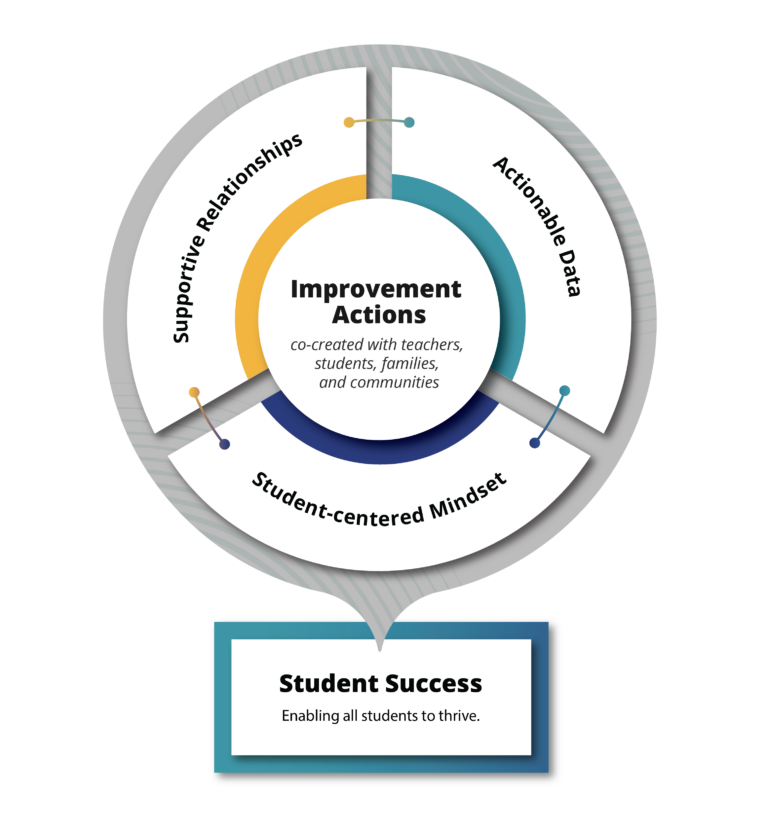Student Agency for 2030 (OECD)
In 2015, the OECD launched the Future of Education and Skills 2030 project, which aims help education systems determine the knowledge, skills, attitudes and values students need to thrive in and shape their future. The first part of the work involved the development of the Learning Compass, a framework that creates common language for broad education goals, and defines the knowledge, skills, attitudes and values that learners need to fulfil their potential and contribute to the well-being of their communities and the planet. Student agency is one of the Learning Compass’ core concepts. Read more about the role of…
The Importance of Student Choice Across All Grade Levels (Edutopia)
Research about the benefits of offering students choices in their own learning, including its power to motivate and engage students; and eight concrete ideas for providing student choice for early and middle, and high school grades.
Youth Voice and Choice (XQ Institute)
Youth Voice and Choice is one of the XQ Institute’s six core design principles for creating a school where exciting and rigorous teaching and learning happens. This article shares advice for empower students as leaders and thinkers by giving them a say in what and how they learn, and another resource outlines five ideas – and why they matter – for incorporating student voice and choice in your school, to design the best school experience possible
Ten Ways to Help Students Motivate Themselves (EdWeek)
Former and current educators share their ideas on how to encourage student motivation in this April 2023 blog post. Whitney Emke highlights the role of fostering belonging, purpose, and agency, and Laura Robb offers seven classroom conditions, like student-centered learning, collaboration and reflection, that nurture positive relationships to build a community of engaged learners.
A Call to Connection: Rediscovering the Transformative Power of Relationships (The Einhorn Collaborative)
A Call to Connection is a primer intended to spark conversation and inspire action in the many different settings and roles we inhabit. It does not put forward a prescriptive blueprint, but rather a set of accessible and adaptable ideas for re-centering our culture on connection. With reflection prompts and vignettes throughout, the primer is a powerful tool for igniting a shared understanding and collective consciousness that opens us up to the possibilities for connection around us.
Bridging Differences Playbook (Greater Good Science Center)
How do we build bridges when we are trying to create a sense of belonging in our school? How do we belong to a collective group with so many differences? This playbook from UC Berkeley’s Greater Good Science Center offers 14 research-based strategies to promote positive dialogue and understanding to bridge differences.
Learning Agency (Inspiring Inquiry)
The Inspiring Inquiry web page features a curated collection of educational resources that inspire teaching and learning through inquiry. Videos, infographics, and blog posts all give educators tools to support student agency. Resources support educators in their efforts to create an inquiry-based culture of thinking and learning that embraces the development of a growth mindset, 21st century skills/dispositions, and an environment in which it is safe for children to struggle, grapple, inquire, wonder, discuss and play.
Agency, Belonging, and Connectedness Resources
Browse resources related to the “small abc’s”, including action steps your school can take to enhance agency, belonging, and connectedness

The Four Core Components of Student Success Systems
High-quality student success systems combine four essential elements so that secondary schools are empowered, in an inclusive way, to graduate all students on a pathway to adult success through higher education and job training. Read the four briefs below to learn more about each of the components.
Research Brief: Student Success Systems Show Positive Results
January, 2024 Recent randomized controlled trials— the gold standard for determining the causal impact of educational interventions— have shown that student success systems generate positive results for students, schools, districts, and communities. Read our new brief to learn more about the benefits of high-quality student success systems.